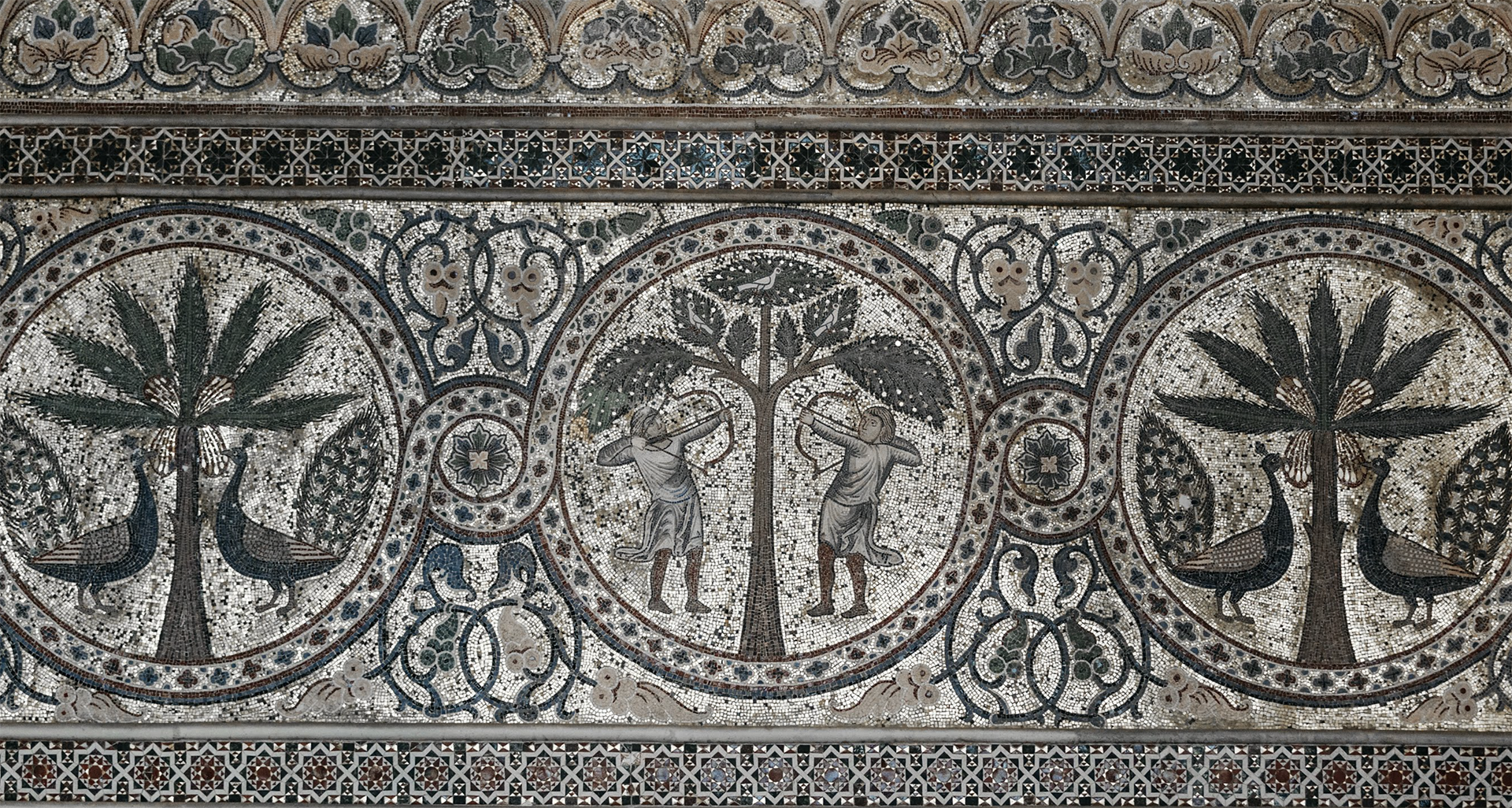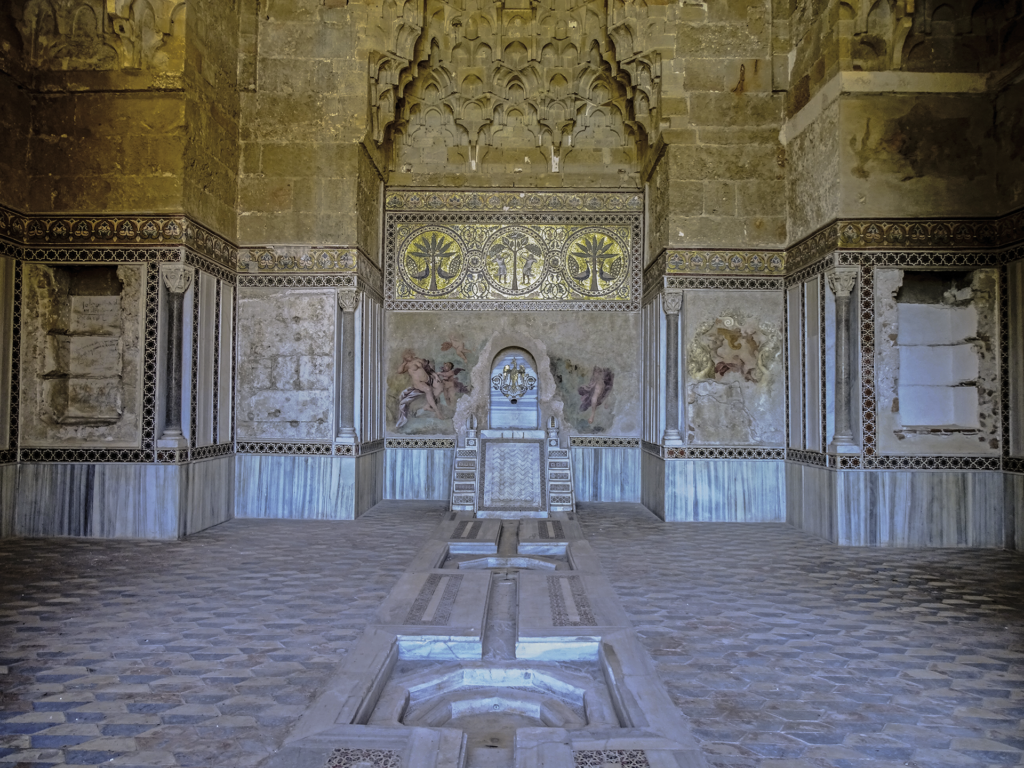The fragmentary knowledge of the building could only be recovered thanks to diplomatic and notarial sources.  Apart from the restoration of the mosaic above the fountain in 1511, the palace retained its structure until the first thirty years of the 17th century. It was only from 1635 onwards that the Zisa underwent a major transformation, due to its poor state of conservation and the work needed to adapt it to the new and changing living requirements of the
Sandoval family
Apart from the restoration of the mosaic above the fountain in 1511, the palace retained its structure until the first thirty years of the 17th century. It was only from 1635 onwards that the Zisa underwent a major transformation, due to its poor state of conservation and the work needed to adapt it to the new and changing living requirements of the
Sandoval family
, who owned the building. The only room that remained unchanged was the
fountain room
, on the ground floor of the palace, which was preserved due to the taste for the exotic in style at the time.
 The rest of the building was remodelled to adapt the space to the new requirements. During this phase, the parti and the architectural design of the façade was transformed. New rooms were opened in relation to the internal layout, the original attic
sun deck
The rest of the building was remodelled to adapt the space to the new requirements. During this phase, the parti and the architectural design of the façade was transformed. New rooms were opened in relation to the internal layout, the original attic
sun deck
was closed and a new staircase was constructed, changing the existing vertical route system. The building was further altered in the 19th century by the
Notarbartolo family
, the new owners of the palace.